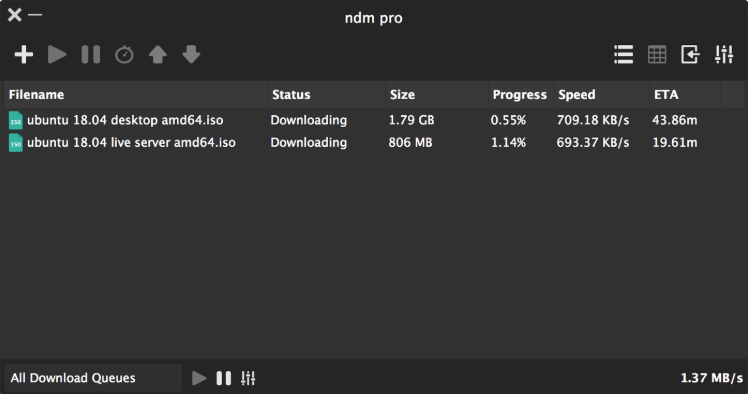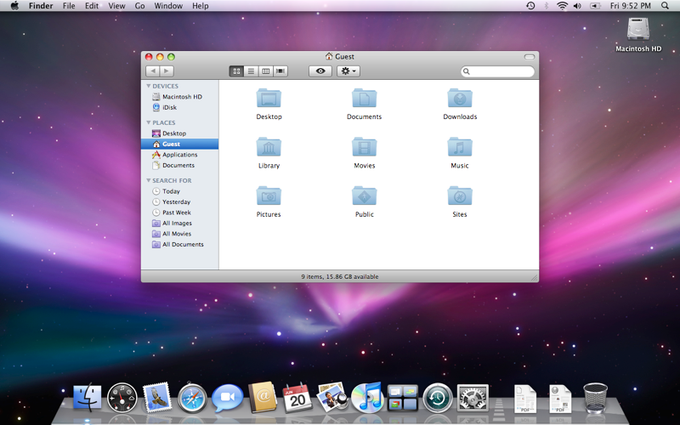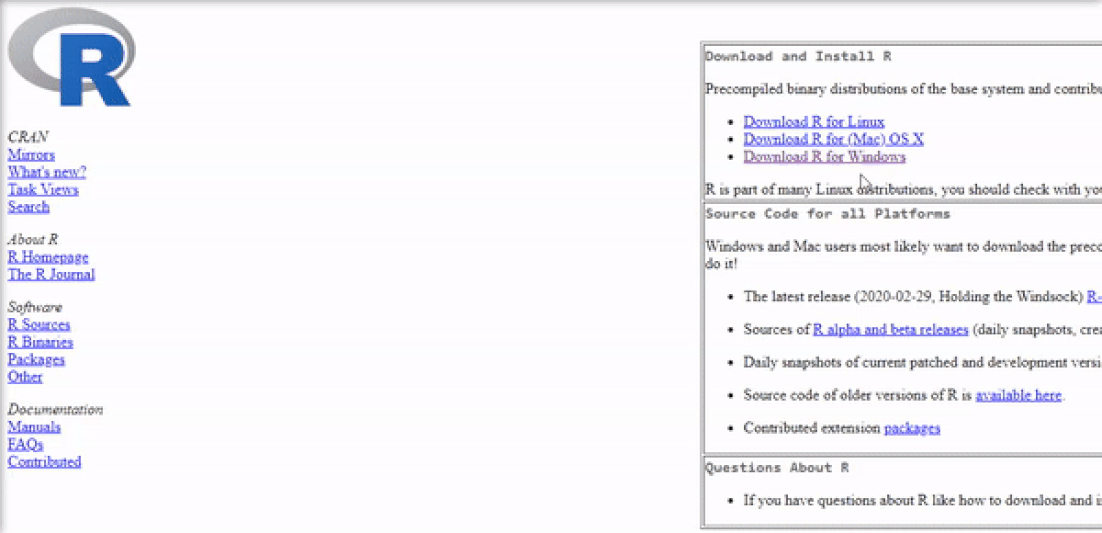These advanced steps are primarily for system administrators and others who are familiar with the command line. You don't need a bootable installer to upgrade macOS or reinstall macOS, but it can be useful when you want to install on multiple computers without downloading the installer each time.
Thank you for choosing Ubuntu Budgie for your new operating system. Ubuntu Budgie is a Ubuntu flavor using desktop environment called Budgie. Budgie is a desktop environment focused on having a clean and yet powerful desktop without unnecessary bloat. Before installing, check the minimum specified hardware, so that you can have flawless experience. Tails is a live operating system, that you can start on almost any computer from a DVD, USB stick, or SD card. It aims at preserving your privacy and anonymity on any computer. The Apple logo should pop up with a moving status bar, like a real mac. This will take a few minutes to boot, so sit back. The language prompt will come up. Select your language and continue. Select 'Disk Utility' and press 'Continue'. Select 'VMware Virtual SATA Hard Drive Media' under 'Internal' hard drive. Select 'Erase' in Disk Utility.
What you need to create a bootable installer
- A USB flash drive or other secondary volume, formatted as Mac OS Extended, with at least 12GB of available storage
- A downloaded installer for macOS Big Sur, Catalina, Mojave, High Sierra, or El Capitan
Download macOS
- Download: macOS Big Sur, macOS Catalina, macOS Mojave, or macOS High Sierra
These download to your Applications folder as an app named Install macOS [version name]. If the installer opens after downloading, quit it without continuing installation. To get the correct installer, download from a Mac that is using macOS Sierra 10.12.5 or later, or El Capitan 10.11.6. Enterprise administrators, please download from Apple, not a locally hosted software-update server. - Download: OS X El Capitan
This downloads as a disk image named InstallMacOSX.dmg. On a Mac that is compatible with El Capitan, open the disk image and run the installer within, named InstallMacOSX.pkg. It installs an app named Install OS X El Capitan into your Applications folder. You will create the bootable installer from this app, not from the disk image or .pkg installer.
Use the 'createinstallmedia' command in Terminal
- Connect the USB flash drive or other volume that you're using for the bootable installer.
- Open Terminal, which is in the Utilities folder of your Applications folder.
- Type or paste one of the following commands in Terminal. These assume that the installer is in your Applications folder, and MyVolume is the name of the USB flash drive or other volume you're using. If it has a different name, replace
MyVolumein these commands with the name of your volume.

Big Sur:*
Catalina:*
Mojave:*
Amd Mac Os Drivers
High Sierra:*
El Capitan:
* If your Mac is using macOS Sierra or earlier, include the --applicationpath argument and installer path, similar to the way this is done in the command for El Capitan.
After typing the command:
- Press Return to enter the command.
- When prompted, type your administrator password and press Return again. Terminal doesn't show any characters as you type your password.
- When prompted, type
Yto confirm that you want to erase the volume, then press Return. Terminal shows the progress as the volume is erased. - After the volume is erased, you may see an alert that Terminal would like to access files on a removable volume. Click OK to allow the copy to proceed.
- When Terminal says that it's done, the volume will have the same name as the installer you downloaded, such as Install macOS Big Sur. You can now quit Terminal and eject the volume.
Use the bootable installer
Determine whether you're using a Mac with Apple silicon, then follow the appropriate steps:
Apple silicon
- Plug the bootable installer into a Mac that is connected to the internet and compatible with the version of macOS you're installing.
- Turn on your Mac and continue to hold the power button until you see the startup options window, which shows your bootable volumes and a gear icon labled Options.
- Select the volume containing the bootable installer, then click Continue.
- When the macOS installer opens, follow the onscreen instructions.
Intel processor
- Plug the bootable installer into a Mac that is connected to the internet and compatible with the version of macOS you're installing.
- Press and hold the Option (Alt) ⌥ key immediately after turning on or restarting your Mac.
- Release the Option key when you see a dark screen showing your bootable volumes.
- Select the volume containing the bootable installer. Then click the up arrow or press Return.
If you can't start up from the bootable installer, make sure that the External Boot setting in Startup Security Utility is set to allow booting from external media. - Choose your language, if prompted.
- Select Install macOS (or Install OS X) from the Utilities window, then click Continue and follow the onscreen instructions.
Learn more
For more information about the createinstallmedia command and the arguments that you can use with it, make sure that the macOS installer is in your Applications folder, then enter the appropriate path in Terminal:
- Big Sur: /Applications/Install macOS Big Sur.app/Contents/Resources/createinstallmedia
- Catalina: /Applications/Install macOS Catalina.app/Contents/Resources/createinstallmedia
- Mojave: /Applications/Install macOS Mojave.app/Contents/Resources/createinstallmedia
- High Sierra: /Applications/Install macOS High Sierra.app/Contents/Resources/createinstallmedia
- El Capitan: /Applications/Install OS X El Capitan.app/Contents/Resources/createinstallmedia
A bootable installer doesn't download macOS from the internet, but it does require an internet connection to get firmware and other information specific to the Mac model.
Upgrading to Snow Leopard, Lion, or Mountain Lion

You can upgrade to Mountain Lion from Lion or directly from Snow Leopard. Mountain Lion can be downloaded from the Mac App Store for $19.99. To access the App Store you must have Snow Leopard 10.6.6 or later installed.
You can purchase Snow Leopard by contacting Customer Service: Contacting Apple for support and service - this includes international calling numbers. The price is $19.99 plus tax. You will receive physical media - DVD - by mail.
Third-party sources for Snow Leopard are:
After you install Snow Leopard you will have to download and install the Mac OS X 10.6.8 Update Combo v1.1 to update Snow Leopard to 10.6.8 and give you access to the App Store.
You can purchase Lion by contacting Customer Service: Contacting Apple for support and service - this includes international calling numbers. The cost is $19.99 (as it was before) plus tax. It's a download.
Be sure your computer meets the minimum requirements:
Macs that can be upgraded to OS X Mountain Lion
Mac Os For Amd64 Download 64-bit

1. iMac (Mid 2007 or newer)
2. MacBook (Late 2008 Aluminum, or Early 2009 or newer)
3. MacBook Pro (Mid/Late 2007 or newer)
4. MacBook Air (Late 2008 or newer)


5. Mac mini (Early 2009 or newer)
6. Mac Pro (Early 2008 or newer)
Mac Os For Amd64 Download Windows 10
7. Xserve (Early 2009)
Mac Os For Amd64 Download 32-bit
Are my applications compatible?
See App Compatibility Table - RoaringApps - App compatibility and feature support for OS X & iOS.
Am I eligible for the free upgrade?
See Apple - Free OS X Mountain Lion upgrade Program.
For a complete How-To introduction from Apple see Apple - Upgrade your Mac to OS X Mountain Lion.
Mac Os On Amd Pc
Model Eligibility for Snow Leopard and Lion.
Snow Leopard General requirements
1. Mac computer with an Intel processor
2. 1GB of memory
3. 5GB of available disk space
4. DVD drive for installation
5. Some features require a compatible Internet service provider; fees may apply.
6. Some features require Apple’s MobileMe service; fees and terms apply.
Lion System Requirements
1. Mac computer with an Intel Core 2 Duo, Core i3, Core i5, Core i7, or Xeon processor
2. 2GB of memory
3. OS X v10.6.6 or later (v10.6.8 recommended)
4. 7GB of available space
5. Some features require an Apple ID; terms apply.
Mac Os For Amd64 Downloads
Oct 26, 2012 1:12 PM
Comments are closed.